Stitching
Stitching is the process by which a fabric is
fashioned as a finished product through various sewing techniques. The final
stage of stitching is to ensure that the product takes its shape as
required. A very special field in itself requires care and precision for stitching.
Different types of stitching that are used in textiles or garments are below-
Chain stitching
Chain
stitching is a sewing and embroidery method, where a series of loop stitches
form a chain-like pattern. It is an ancient craft - examples of Chinese chain
stitching embroidered on silk thread are given in the Warring States Period.
Handmade chain stitching does not require embroidery as the needle goes through
multiple layers of fabric. For this reason, the stitch is an effective surface
decorating around the finished fabric. Since chain stitches can create flowing,
curved lines, they are used in many surface embroidery styles that mimic
drawing on threads. It is also used to make tambour lace, needles, macrame, and
crochet.
Straight or flat stitching
Straight
or flat stitching is a class of common embroidery and sewing stitches where
individual stitches are made without crossing or looping the thread. These
stitches are used to create broken or unbroken lines or starbursts, fill
shapes, and make geometric designs. Running stitching, Holbein or
double-running stitching, satin stitch, and fun stitch are all divided into
straight or flat stitching. Backstitch is sometimes included in this section.
Zigzag stitching
An
alternate geometry of a zigzag stitch lockstitch. This is a stitch used on the
back where straight stitching will not be enough, such as reinforcing
buttonholes, sewing stretchable fabrics, and temporarily joining the
edge-to-edge of two workpieces. When making zigzag stitches, the side-to-side
movement of the sewing machine needle is controlled by a cam. As the cam rotates,
a finger-like follower, attached to the needle bar, moves with the cam and
detects its launches. When the follower moves in and out, the needle bar moves
from side to side. Most of the sewing machines made before the mid-1950s lack
this hardware and therefore cannot produce a zigzag seam locally. However,
there are often shank-driven attachments available that enable the same effect
to be achieved by moving the fabric from side to side instead of the needle
bar.
Blind stitching
A
blind stitch or sewing is a process of joining two pieces of fabric so that the
thread of the stitch is invisible or almost invisible. Blind stitches hidden
stitches under folded edges. Therefore, this type of stitching may be used to
create a blind hem or to join two folded edges together. Blind hem sticks are
completely hidden on the front of the garment and almost completely hidden
inside the garment. Each time the sewer pulls the needle through the fabric, it
only catches a few threads of the fabric, which means most of the stitches are
hidden inside the hem. Blind stitching is useful when joining two folded edges
together because the thread is only visible when the folding element is pulled.
This technique allows the sewer to invisibly attach pockets, faces, and
trimming to a garment. A sewing machine can create a blind hem. In this case, a
specialized pressure foot is required and the sewing pattern dedicated to the
sewer blind hems must be selected. A zigzag sewing technique can be used with
the help of a sewing machine to create a blind stitch.
Back stitching
Back
stitching and its variants stem stitch, outline stitch, and split stitch is
embroidery and a class of sewing stitches where individual stitches are made
behind the general side of the stitch. In embroidery, these stitches create
lines and are often used to outline shapes and add subtle details to an
embroidered figure. It is also used in embroidery lettering. In the case of
hand stitching, it is a utility stitch that connects the two fabrics firmly and
permanently. The small stitches made on the back make the backstitching a
strong stitch between the basic stitches. Therefore, it can be used to sew
stiffly by hand without a sewing machine.
Cross-stitching
A
form of cross-stitch is a popular form of stitching and count-thread embroidery
where X-shaped stitches in a tiled, raster-like pattern are used to create an
image. The stitcher counts the threads in pieces of cloth woven together like
linen on each side so that the stitches are of uniform size and appearance. This
form of cross-stitching is also called cross-stitching to distinguish it from
other forms of cross-stitching. Sometimes the designs printed on the fabric are
cross-stitched. The stitcher simply sews on top of the printed pattern.
Cross-stitching is often run on an easily countable fabric called an Ida cloth
whose weaves create a clearly visible grid of perforated squares for needles at
each corner.
Embroidery stitching
Embroidery
stitches are also called short stitches. Embroidery stitches are the smallest unit
of embroidery. Embroidery patterns are made by sewing many embroideries, either
all the same or different, either following a calculation chart on paper,
following a design drawn on the fabric, or even working freehand. In everyday
language, in the context of embroidery or hand-stitching, the movement of a
sewing fiber from the back to the front and to the back is defined as the
movement of the needle. The forward thread stroke produced by this is also
called stitching. In the context of embroidery, an embroidery stitch means one
or more stitches that are always executed in the same way, forming an image.
Buttonhole stitching
Buttonhole
stitching and related blanket sewing hand-sewing stitches are used in making
sewing, embroidery, and needle lace. This stitch is used to secure the edges of
the buttonholes. In addition to reinforcing buttonholes and preventing the cut
fabric from trimming, buttonhole stitches are used to create stems in crewel
embroidery, to make stitched islets, to attach applique to ground fabric, and
as couch stitching. Buttonhole stitch scallops, usually raised or padded by
rows of narrow or chain stitching, were a popular edge in the 19th century.
Buttonhole stitches are also used in cutwork, including broderie Anglaise, and
form the basis of a variety of needles. These stitches are well represented in
16th and 17th-century whitework items. The buttonhole stitch appeared in Jane
Bostock's Sampler (1598) is a well-known, signed specimen of the present
day, and is now in the Victoria and Albert Museum in London.
Running stitching
Running stitch or straight sewing is the primary stitch of hand sewing and embroidery, on which all other forms of sewing are based. Stitching is done by sewing needles inside and outside the fabric at regular distances. The needle is always driven through both layers of fabric where it starts and ends on the other side. A running stitch runs through the fabric. They run in a horizontal direction where a few stitches can be taken from the needle before pulling the thread. These stitches are often not visible because they are used to close the seams.

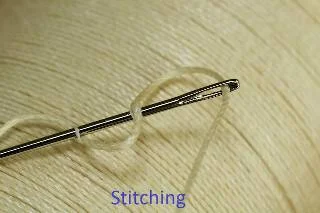
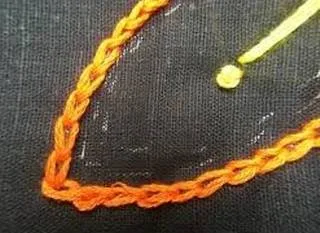
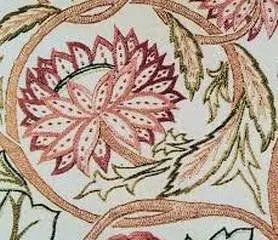
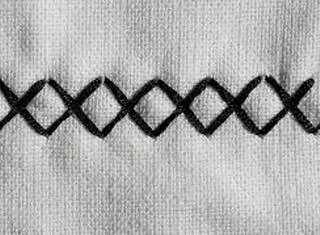
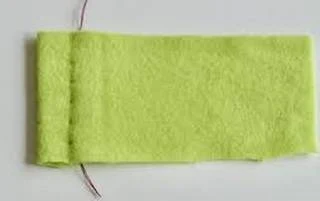
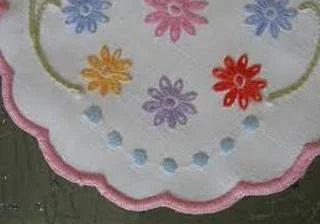
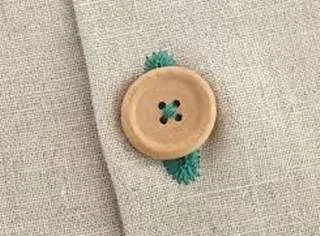
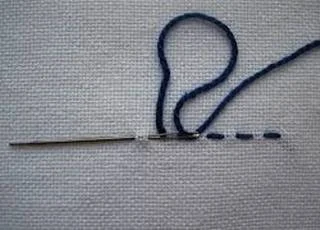







0 Comments